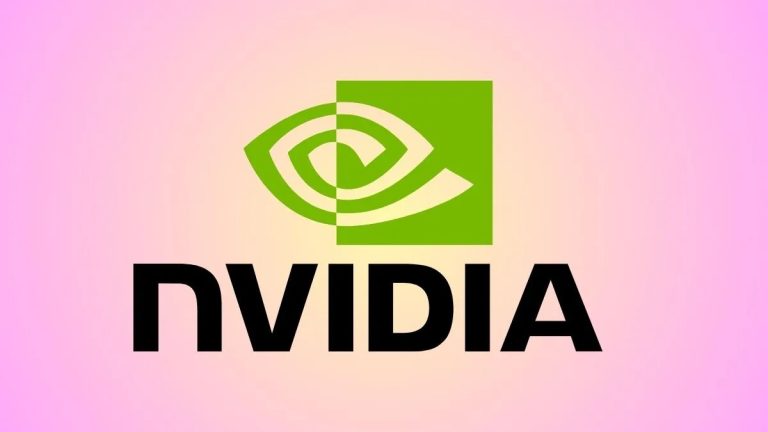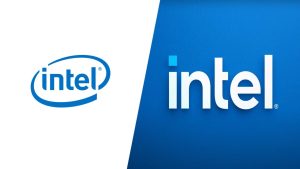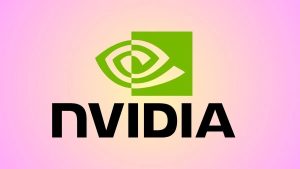NVIDIA has become synonymous with artificial intelligence (AI) and deep learning, transforming from a gaming-focused company into a global leader in AI computing. But how did this transition happen? How did a company that initially built graphics cards for gamers become the backbone of AI advancements across industries? This business case study breaks down NVIDIA’s journey, from its origins to its AI dominance, and explores the key strategies, innovations, and market decisions that propelled it to the top.
1. The Origins of NVIDIA
NVIDIA was founded in 1993 by Jensen Huang, Chris Malachowsky, and Curtis Priem with a vision to revolutionize computer graphics. The company’s early years were focused on developing graphics processing units (GPUs) for gaming and professional applications.
Early Milestones:
- 1999: NVIDIA introduced the GeForce 256, the world’s first GPU, which transformed gaming graphics.
- 2000s: The company continued to push the boundaries of graphics processing, gaining dominance in gaming and professional visualization markets.
- 2006: The launch of CUDA (Compute Unified Device Architecture) marked a turning point, allowing GPUs to be used for more than just rendering graphics.
While NVIDIA built its reputation in gaming, it unknowingly set the foundation for its AI dominance through GPU advancements.
2. The Rise of GPUs and AI
The real game-changer came when researchers realized that GPUs could be used for AI and deep learning applications. Traditional CPUs were struggling to handle the massive parallel computations required for machine learning, but GPUs, with their parallel processing capabilities, were perfect for the job.
Key Technological Advancements:
- Parallel Processing: GPUs can handle thousands of operations simultaneously, making them ideal for deep learning models.
- Tensor Cores: Introduced in NVIDIA’s Volta and Ampere architectures, Tensor Cores significantly improved AI computation speeds.
- Deep Learning Boost: NVIDIA’s GPUs became the standard hardware for AI researchers, including those at Google DeepMind, OpenAI, and academia.
By recognizing the potential of GPUs beyond gaming, NVIDIA began shifting its focus toward AI computing.
3. The Role of CUDA in AI Leadership
One of NVIDIA’s most significant contributions to AI was the development of CUDA, a parallel computing platform and API model launched in 2006. CUDA allowed developers and researchers to harness the power of GPUs for a wide range of applications beyond graphics, including AI, scientific computing, and data analytics.
How CUDA Changed the Game:
- Made GPUs accessible for AI and deep learning research.
- Enabled GPU-accelerated computing, making AI training and inference faster.
- Became the foundation for AI software frameworks like TensorFlow and PyTorch.
With CUDA, NVIDIA positioned itself as the go-to hardware provider for AI, solidifying its leadership in the space.
4. NVIDIA’s AI-Centric Strategy
As the demand for AI skyrocketed, NVIDIA strategically pivoted from a gaming company to an AI-driven enterprise.
Key Moves in NVIDIA’s AI Strategy:
- Expanding into Data Centers: Recognizing that AI workloads required massive computing power, NVIDIA invested heavily in data center GPUs.
- AI Acquisitions: NVIDIA acquired companies like Mellanox (for networking solutions) and Arm (to strengthen AI chip development).
- AI-Specific Hardware: The launch of DGX systems, A100 GPUs, and AI chips tailored for deep learning.
By embracing AI as its core business, NVIDIA transformed itself into an indispensable force in the AI revolution.
5. Data Centers and Cloud Computing Dominance
AI doesn’t just run on a single GPU—it requires massive computing clusters. NVIDIA capitalized on this by making its GPUs the standard hardware for AI data centers.
Major Partnerships with Cloud Giants:
- Amazon AWS: Powers machine learning and AI workloads with NVIDIA GPUs.
- Google Cloud: Uses NVIDIA’s AI accelerators for deep learning.
- Microsoft Azure: NVIDIA GPUs drive AI services on Microsoft’s cloud platform.
NVIDIA also pioneered AI supercomputing, with its NVIDIA DGX SuperPODs being used in AI research labs worldwide.
6. AI in Autonomous Vehicles
One of NVIDIA’s most groundbreaking ventures in AI has been in autonomous vehicles. As self-driving technology gained traction, NVIDIA leveraged its expertise in AI and GPUs to become a leader in the automotive AI industry.
How NVIDIA Powers Autonomous Vehicles:
- NVIDIA DRIVE Platform: A comprehensive AI system that enables autonomous driving, using deep learning and sensor fusion.
- AI-Powered Perception: NVIDIA GPUs process vast amounts of data from LiDAR, radar, and cameras to recognize objects, pedestrians, and road conditions.
- Simulation and Training: AI models for self-driving cars require extensive training. NVIDIA built Drive Sim, a virtual environment powered by AI to train autonomous vehicles safely.
Key Partnerships in the Automotive Industry:
- Tesla: NVIDIA initially supplied AI chips for Tesla’s Autopilot system.
- Mercedes-Benz: Partnered with NVIDIA to develop AI-powered self-driving capabilities.
- Toyota and Volvo: Using NVIDIA’s AI platform for advanced driver assistance systems.
As autonomous driving technology progresses, NVIDIA continues to be at the forefront, shaping the future of AI-driven mobility.
7. Expansion into Healthcare and AI Research
AI isn’t just transforming industries like gaming and autonomous driving—it’s also revolutionizing healthcare. NVIDIA has made significant strides in AI-driven medical research, partnering with top institutions and biotech firms.
NVIDIA’s AI Contributions to Healthcare:
- Clara AI Platform: A medical imaging AI that assists in diagnostics, including cancer detection and radiology.
- AI in Drug Discovery: NVIDIA GPUs are used in computational drug discovery, helping pharmaceutical companies accelerate research.
- Partnerships with Research Institutions: Collaborating with universities and hospitals to develop AI-based medical solutions.
From identifying diseases in medical scans to aiding in vaccine research, NVIDIA’s AI innovations are making healthcare more efficient and effective.
8. The Role of AI in NVIDIA’s Gaming Legacy
Even as NVIDIA expanded into AI-heavy industries, it never abandoned its gaming roots. Instead, the company integrated AI into gaming, making it a core part of its GPU strategy.
AI-Powered Gaming Innovations:
- DLSS (Deep Learning Super Sampling): Uses AI to enhance gaming graphics while improving performance.
- RTX Ray Tracing: AI-driven real-time lighting effects for ultra-realistic visuals.
- AI-Enhanced Game Development: Game developers use NVIDIA’s AI tools to create more immersive gaming experiences.
By merging AI with gaming, NVIDIA has maintained its dominance in the gaming GPU market while pioneering new AI-driven advancements.
9. Financial Growth and Market Leadership
NVIDIA’s strategic shift towards AI has led to astronomical financial growth, making it one of the most valuable tech companies in the world.
Financial Highlights:
- Stock Performance: NVIDIA’s stock has skyrocketed in the past decade, largely driven by AI demand.
- Revenue Growth: AI-related products, especially in data centers and automotive AI, have significantly boosted revenue.
- Market Dominance: NVIDIA holds a dominant share in both AI GPUs and gaming graphics markets.
As AI continues to expand across industries, NVIDIA’s financial strength positions it for even greater success in the coming years.
10. Competitive Landscape: Rivals vs. NVIDIA
Despite its dominance, NVIDIA faces stiff competition from major tech giants and chipmakers.
Top Competitors:
- AMD: Competing in gaming GPUs and AI processing with its Radeon and Instinct series.
- Intel: Investing heavily in AI chips and GPU development.
- Google TPUs (Tensor Processing Units): Google’s in-house AI hardware, designed to compete with NVIDIA’s AI chips.
How NVIDIA Stays Ahead:
- Constant innovation in AI hardware and software.
- Expanding into new AI-driven industries.
- Building strong partnerships with tech and research institutions.
While competition is fierce, NVIDIA’s first-mover advantage in AI and deep learning keeps it ahead of the curve.
11. The Future of NVIDIA in AI
As AI continues to evolve, NVIDIA is positioning itself at the center of the next technological revolution.
Future AI Innovations:
- AI-Powered Robotics: NVIDIA is developing AI-driven robotics solutions for manufacturing and automation.
- Metaverse & AI: NVIDIA’s Omniverse platform is set to drive AI-powered virtual worlds.
- Artificial General Intelligence (AGI): The long-term goal of AI research, where NVIDIA could play a crucial role.
With AI becoming more integrated into everyday life, NVIDIA’s future looks incredibly promising.
12. Lessons from NVIDIA’s AI Success
For businesses and entrepreneurs, NVIDIA’s journey provides valuable lessons on strategic growth and innovation.
Key Takeaways:
- Invest in Future Technologies: NVIDIA bet on AI early and reaped massive rewards.
- Diversify Smartly: Expanding beyond gaming allowed NVIDIA to dominate AI markets.
- Leverage Partnerships: Collaborating with industry leaders helped NVIDIA scale faster.
By following these strategies, companies can position themselves for success in AI-driven markets.
Conclusion
NVIDIA’s transformation from a gaming GPU company to the king of AI is nothing short of remarkable. Through strategic innovation, relentless investment in AI, and smart business decisions, NVIDIA has positioned itself as an industry leader in artificial intelligence.
With AI continuing to revolutionize industries, NVIDIA’s role in shaping the future of technology remains critical. Whether in gaming, autonomous vehicles, data centers, or healthcare, NVIDIA’s influence on AI is undeniable—and it’s just getting started.




